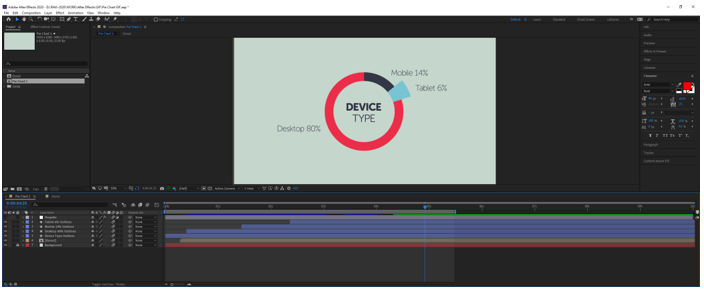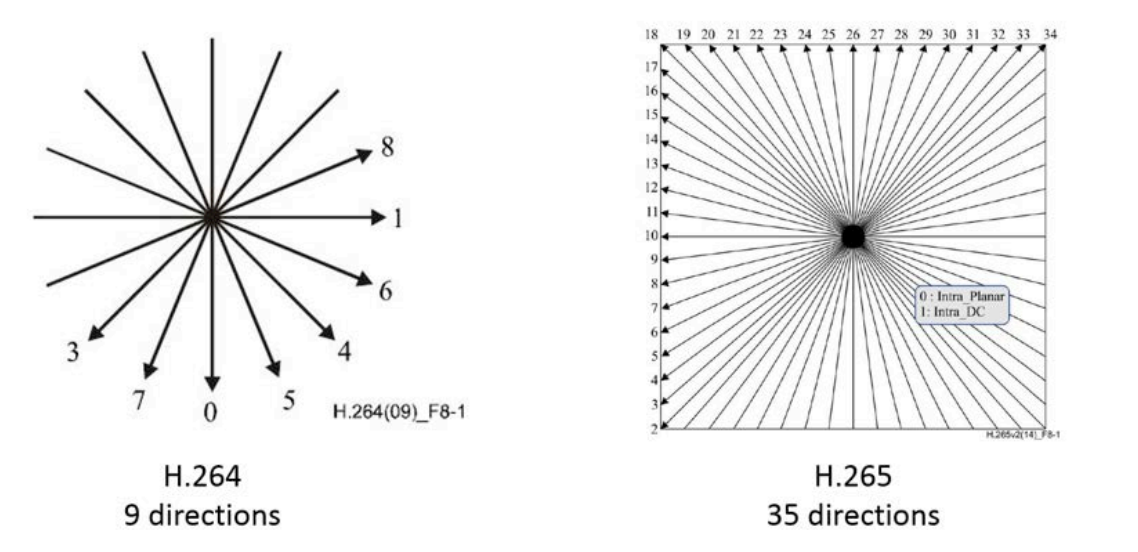After Effects CC 2014 (13.0) and later do not include exporters for creating H.264, MPEG-2, and WMV videos directly from the render queue. To create videos in these formats, you can use Adobe Media Encoder.
- Apr 18, 2019 1) Use “Queue in AME” instead of “Render” to have After Effects send the comp to Adobe Media Encoder automatically via dynamic link; in AME, you make H.264 media directly. 2) Render a high-quality intermediate from Ae and transcode that to H.264 manually (or via watch folder) with Adobe Media Encoder.
- Automate your workflows with presets, Watch Folders and Destination Publishing. Use Time Tuner to invisibly adjust duration and apply LUTs and Loudness corrections without having to re-open projects. Tight integration with Adobe Premiere Pro, After Effects and other applications provides a.
- Jun 04, 2020 Premiere Pro has supported H.264/H.265 hardware encoding for a long time, but it was limited to Intel CPUs that supported Quicksync. In the new 14.2 version, Adobe has added GPU-based hardware encoding that supports most modern GPUs from both NVIDIA and AMD.
- Feb 16, 2019 Hello, I'm missing the h264 option for rendering my video in After Effects, even after I tried using quicktime alternative 322 like most of the tutorials I could find suggested. I installed quicktime alternative 322 a few times already and even restarted my computer and h264 is still unavailable in after effects and media encoder.
Note:
You can still import videos in these formats into After Effects.
Adobe Media Encoder is effective for creating files in final delivery formats because of its Preset Browser and easy-to-use system for creating, saving, sharing, and applying encoding presets. Using the Effects tab settings, you can automatically add watermarks, timecode overlays, and so on. You have two primary options for using Adobe Media Encoder with After Effects to create videos in H.264, MPEG-2, and WMV formats:
Welcome to After Effects Tutorial Series After Effects Tutorial: Export QuickTime H264 Format DOWNLOAD QuickTime Here. SUBTITLES IN THE TUTORIAL: Check Export default do not Quicktime H264.
- Render and export a losslessly encoded master file out of After Effects to a watch folder monitored by Adobe Media Encoder.
- Send the composition directly to Adobe Media Encoder from After Effects (Composition > Add To Adobe Media Encoder Queue).
Note:
If you still need to create videos in these formats from the After Effects render queue, install After Effects CC (12.2.1) alongside After Effects CC 2014 (13.0) or later, and use the previous version for these specific output tasks.
Render and export a losslessly encoded master file
The fastest way to create videos in these formats is to use the After Effects render queue to export a losslessly encoded master file (for example, using the PNG video codec in a QuickTime .mov container file) to a watch folder that Adobe Media Encoder monitors. You can assign encoding presets to a watch folder in Adobe Media Encoder so that it automatically encodes using whichever settings you specify.
- Advantage: This method uses After Effects performance features for rendering (such as GPU acceleration and multiprocessing where applicable) and Adobe Media Encoder performance features for encoding (such as parallel encoding).
- Disadvantage: This method occupies the main After Effects application for the entire rendering operation, during which time you can’t use After Effects for anything else.
Send the composition directly to Adobe Media Encoder
Another method to create videos in these formats is to directly add the composition from After Effects to the Adobe Media Encoder queue. This method allows you to continue working in After Effects while the rendering and encoding takes place, since the rendering is performed by a background instance of After Effects. The rendering phase may be slower in some cases (compared with using the After Effects render queue) because the headless version of After Effects rendering in the background does not have access to GPU acceleration and multiprocessing features.
Note:
If you place an After Effects project (.aep) file in a watch folder that is being monitored by Adobe Media Encoder, the compositions at the top level in the project (i.e., those not in folders in the Project panel) will automatically be added to the Adobe Media Encoder encoding queue.
More like this
Adobe After Effects, hands down is one of the best editing software I have ever came across. Editing, animating & creating something unique is a daily game when it comes to this very software. All the movies we watch nowadays with lots of intensive visual effects has a fair probability of being rendered using After Effects itself.
The issue with the software arises when we start to create a new project. Soon when you finish your edits and head towards rendering it, the size of file with highest/medium settings comes out to be very large. Adding to it the rendering time also increases depending upon the duration of the clip. So before moving to the fix, lets talk about the importance of h.264 codec and why we need it.
h.264
H.264 is a video codec standard, which is also known as AVC. The AVC stands for Advanced Video Coding MPEG-4 PT 10. H.264 codec can achieve high quality video in relatively very low bit rates. It is from one of the most commonly used formats for recording, distribution and compression of video content. Other than that it supports resolutions up to 4K UHD. Hence the h.264 video codec enclosure will lead us for best quality video rendering as well as with reduced size. So we will be requiring the following codec to be installed on the system.


How to fix?
So to fix the issue, we will install the quicktime alternative on our system. What this will do is, it will install the h.264 codec availability in After Effects. So lets start:
- Download the Quicktime Alternative application. Link 1 (DropBox) , Link 2 (Free Codecs)
- Click next and install the Application.
- When the installation is complete, simply restart your PC.
- Now open up After Effects, select your clip and hit composition to select the “add to render queue” option.
- Then click Output Modules: lossless (yellow color text), to open up the module option. There select the Format to open up the dropdown menu to choose “Quicktime“. (Which we installed).
- After that click the “Format options” box, to select h.264 option from the Video Codecs dropdown list.

Alternate Method

If installing the Quicktime doesn’t solve the problem, then using this method will be the only option left for you. Unfortunately in my case I had to rely on this following method to render my video in h.264. We will now install another application by Adobe called AME (Adobe Media Encoder) on the system. After the installation of the application we will use AME to render our clip in h.264 format.
- Download and install Adobe Media Encoder (AME) software on the system.
- After that open the software and minimize it.
- When your video edit is finished in After Affects, click on the composition option and select “Add to Adobe Media Encoder Queue“.
- It will open the footage in AME, there you will find lots of options for rendering. Just select the h.264 option and render your project and save it.
After Effects 2020 H264 Download
The output video’s file size would be less, because we used the h.264 container. Now simply upload and share the clip without any worries. Don’t hassle to use the comment box down below for any problems. Stay tuned!!
